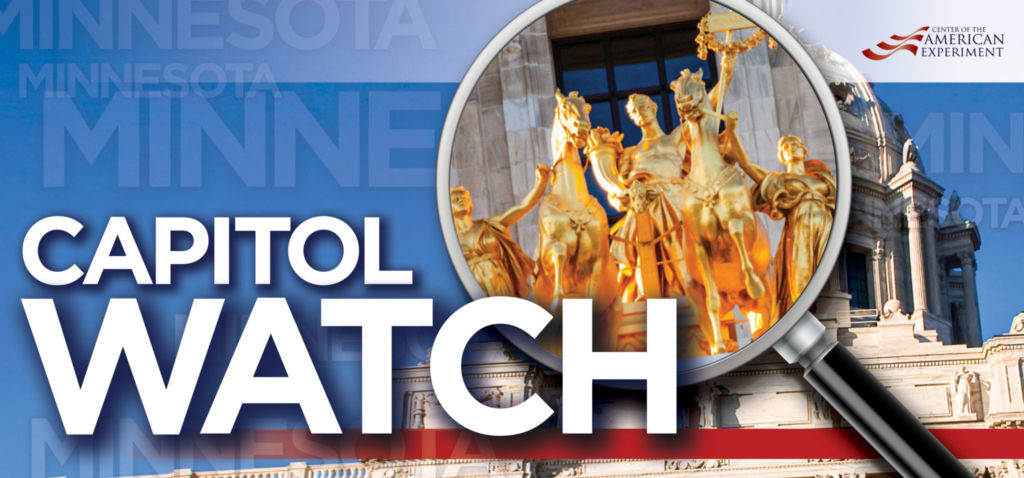Capitol Watch – Are state tax cuts possible with new federal stimulus bill?
Gov. Tim Walz will release a revised budget this week, reacting to the updated state budget forecast that changed its outlook from a $1.3 billion deficit to a $1.6 billion surplus. So far, he has stubbornly held on to his proposed tax increases, creating a new 5th tier on the income tax for “millionaires.” He also called on legislators to address his $150 million summer school proposal.
Meanwhile, President Biden signed the American Rescue Plan that will send $2.597 billion to Minnesota state government, according to the Minnesota Center for Fiscal Excellence (MCFE). The Center also points out that Minnesota will receive an additional $1.392 for K-12 education and $594 million for higher education. That’s $4.583 billion in one-time money from the federal government on top of the $1.6 billion state surplus.
It will be interesting to see how Walz integrates this federal funding into his revised budget. It is unnecessary to use state funding for his summer school program given the federal K-12 funding. And as MCFE points out, the timing could be tricky because Minnesota has to balance the next two-year budget by the first Monday after the third Saturday in May (May 17th). We may not have the final rules from the feds on how states can spend the money from the American Rescue Plan by that date, adding uncertainty to the budget process.
Senate passes PPP loan tax breaks – but will they be allowed?
The Senate passed a tax bill this week with strong bipartisan support that exempts PPP loans from state taxes, “conforming” with the federal government on the loans given last summer to help businesses keep employees on the payroll. The bill also provided tax relief for Minnesotans who received expanded federal unemployment benefits.
It’s not clear if tax breaks like this will be possible given the restrictions in the $1.9 trillion American Rescue Plan.
A State or territory shall not use the funds provided under this section … to either directly or indirectly offset a reduction in the net tax revenue of such State or territory resulting from a change in law, regulation, or administrative interpretation during the covered period that reduces any tax (by providing for a reduction in a rate, a rebate, a deduction, a credit, or otherwise) or delays the imposition of any tax or tax increase.
If a state receives federal funding under this bill (and they all will), they can’t use it to cut taxes. So the question will turn to fungibility – did the tax cuts come from federal funding or did the state use different money? Or is all money fungible, in other words, is it all mixed together, and one dollar can’t be distinguished from another?
Rep. Pat Garofalo (R-Farmington), the lead Republican on the House Ways and Means Committee, tweeted his feelings about the federal restrictions:

There are a lot of moving pieces to the 2021 state budget, and it will be more challenging than ever to craft a compromise. Perhaps the extra money and complexity will make it easier for leaders to reach a final deal.
This piece originally appeared in our Capitol Watch newsletter. Click here to receive the weekly Capitol Watch newsletter.
